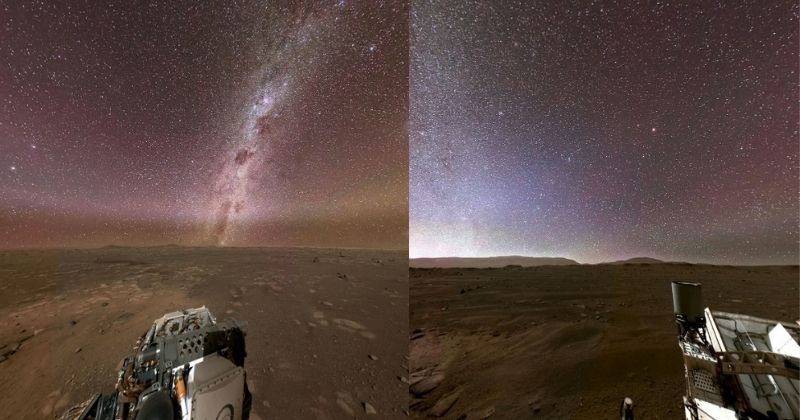



Earth is covered in vegetation that hides these layers.”Ī second mosaic captured by Perseverance shows a separate location that is part of the curvilinear unit and about a quarter mile (450 meters) from Skrinkle Haven. “We do see deposits like this on Earth, but they’re never as well exposed as they are here on Mars. “The wind has acted like a scalpel that has cut the tops off these deposits,” said Michael Lamb of Caltech, a river specialist and Perseverance science team collaborator. Scientists suspect that after these piles of sediment turned to rock, they were sandblasted by wind over the eons and carved down to their present size. The layers were likely much taller in the past. They could be the remnants of a river’s banks that shifted over time – or the remnants of sandbars that formed in the river. When viewed from the ground, the curved layers appear arranged in rows that ripple out across the landscape. Scientists are sure the curved layers here were formed by powerfully flowing water, but Mastcam-Z’s detailed shots have left them debating what kind: a river such as the Mississippi, which winds snakelike across the landscape, or a braided river like Nebraska’s Platte, which forms small islands of sediment called sandbars. One location within the curvilinear unit, nicknamed “Skrinkle Haven,” is captured in one of the new Mastcam-Z mosaics.
#Nasa mars rover series
Years ago, scientists noticed a series of curving bands of layered rock within Jezero Crater that they dubbed “the curvilinear unit.” They could see these layers from space but are finally able to see them up close, thanks to Perseverance. “It’s been a delight to look at rocks on another planet and see processes that are so familiar,” Ives said. With a background in studying Earth-based rivers, Ives has spent the last six months analyzing images of the Red Planet’s surface. The more powerful the flow of water, the more easily it’s able to move larger pieces of material,” said Libby Ives, a postdoctoral researcher at NASA’s Jet Propulsion Laboratory in Southern California, which operates the Perseverance rover. “Those indicate a high-energy river that’s truckin’ and carrying a lot of debris. Stitched together from hundreds of images captured by Perseverance’s Mastcam-Z instrument, two new mosaics suggest the latter, revealing important clues: coarse sediment grains and cobbles. One question scientists want to answer is whether that water flowed in relatively shallow streams – closer to what NASA’s Curiosity rover has found evidence of in Gale Crater – or a more powerful river system. Perseverance is exploring the top of a fan-shaped pile of sedimentary rock that stands 820 feet (250 meters) tall and features curving layers suggestive of flowing water. NASA’s Perseverance Mars rover captured this mosaic of a hill nicknamed “Pinestand.” Scientists think the tall sedimentary layers stacked on top of one another here could have been formed by a deep, fast-moving river. Understanding these watery environments could help scientists in their efforts to seek out signs of ancient microbial life that may have been preserved in Martian rock. The river was part of a network of waterways that flowed into Jezero Crater, the area the rover has been exploring since landing more than two years ago.


 0 kommentar(er)
0 kommentar(er)
